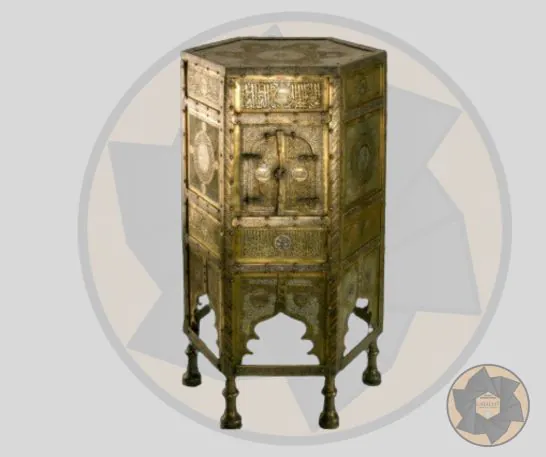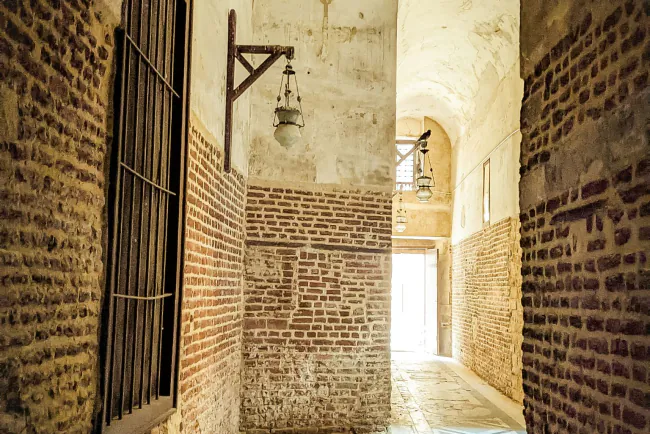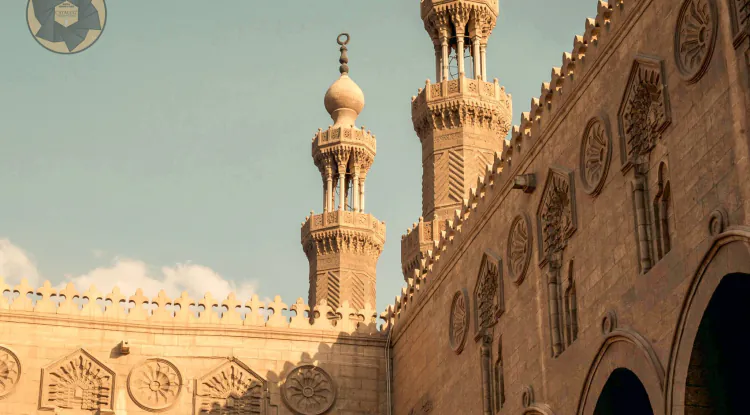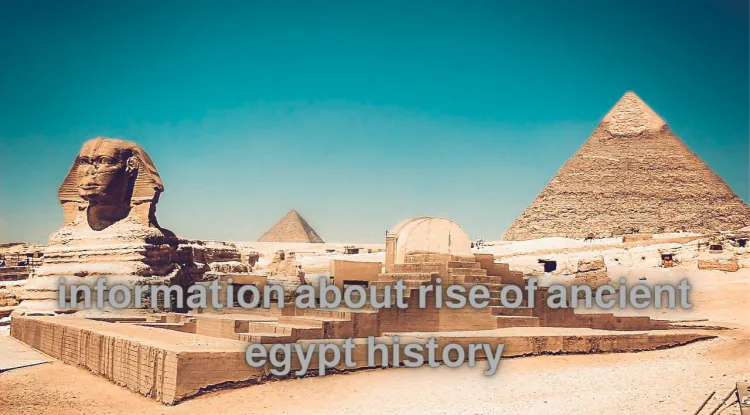Seat or table of Al-Nasir Muhammad ibn Qalawun
The piece has a hexagonal shape, and is made of hollow brass and lined with silver. In the middle of the piece is an inscription of circular writing in Kufic script.

Chair of Al-Nasir Muhammad bin Qalawun
| Item Name: | seat or dining table |
| Conservation place | Museum of Islamic Art |
| Date of the piece | 728 AH / 1327 AD |
| Period | Mamluk era |
| Place of manufacture | Cairo |
| Material |
brass inlaid with silver |
Original owner: Sultan Al-Nasir Muhammad bin Qalawun
Who is Sultan Al-Nasir Muhammad bin Qalawun?
Al-Nasir Muhammad bin Qalawun was born in 683 AH / 1284 AD, and died in Dhul-Hijjah 741 AH / June 1341 AD. He was called Abu Al-Ma’ali and Abu Al-Futuh, the ninth sultan of the Bahri Mamluks, as he ruled Egypt three times, from the first of December 1293 AD until December 1294 AD, used from 1299 AD until 1309 AD. He was wealthy and charitable from 1309 until his death in 1284 AD. Al-Nasir Muhammad was born in Al-Jabal Castle, which is the headquarters of the sultans in Cairo, where the princes and nobles were arrested. He is the son of Sultan Al-Mansur and the brother of Sultan Al-Ashraf. He assumed the reins of power after his brother was killed when he was nine years old on the 16th of Muharram. 963 AH / December 18, 1293 AD.
the maker: Muhammad bin Sunqar al-Baghdadi
This is according to the dated text on the legs that began for the piece, where it states: “The work of the poor servant, hoping for the pardon of his Lord, known as the son of the teacher, Professor Muhammad ibn Sunqur al-Baghdadi al-Sankari, on the date of seven hundred and eight, in the days of our Lord, King Nasser, the glory of his victory.”
Piece description:
The piece is shaped like a hexagon. It is made of hollow brass and lined with silver. In the middle of the piece is an inscription of circular writing in the Kufic script. At the top, it is shaped like the rays of the sun, and inside it the artist recorded the name “Muhammad.” The circular inscription reads: “Glory be to our Lord, Sultan Al-Nasser, Nasser of the world and religion, Muhammad bin Sultan Qalawun.” And in the middle of the surface of the piece is another written text in thuluth script that includes the name and titles of Sultan Al-Nasser Muhammad.
“Glory be to our Lord, the Sultan, King Al-Nasser, the scholar, the just, the Mujahid, Al-Murabit, Al-Mathaghir, Al-Mu’ayyad Al-Mansour, the Sultan of Islam and the Muslims, the killer of infidels and polytheists, the bringer of justice in the worlds, the protector of the oppressed by the oppressors, the supporter of the religion of Muhammadiyah, the supporter of the world and religion, the son of the Sultan, King Al-Mansur Qalawun Al-Salihi.”
Each side of the piece is surrounded from the inside by half-lobed semi-circles decorated with the shapes of flying ducks characterized by movement, which was the prevailing style in the Mamluk era. Each surface of the piece also contains four decorative inlays executed vertically.
In the middle of these surfaces is a small door with two leaves that opens to an inner shelf. These fillings are decorated with arabesque motifs of interlaced floral motifs and branches, in addition to lotus flowers. This piece has six short-shaped legs above the legs of the piece, on which are recorded inscriptions indicating the name of the maker, as mentioned before.
What's Your Reaction?





















